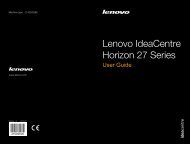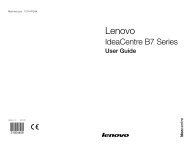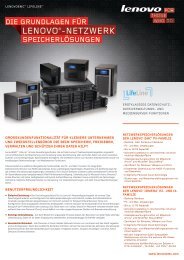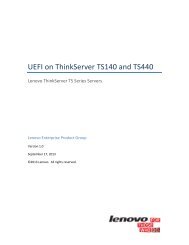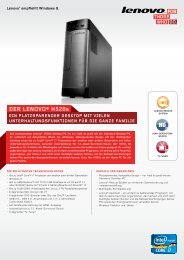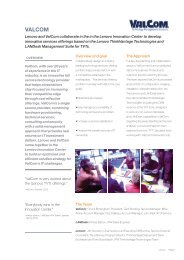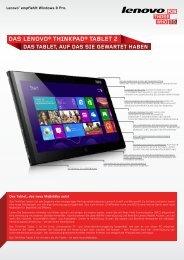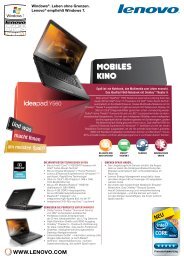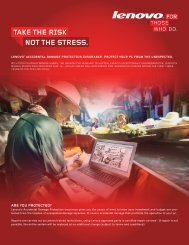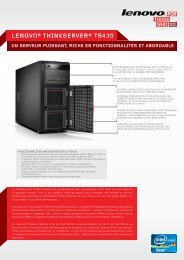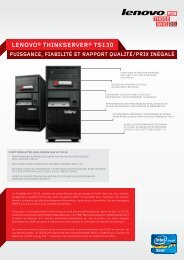Create successful ePaper yourself
Turn your PDF publications into a flip-book with our unique Google optimized e-Paper software.
8. A Setup Confirmation window opens. You are prompted to select <strong>User</strong> or <strong>User</strong> + Master. Select <strong>User</strong> if<br />
you want to set only one hard disk password. If you are an administrator or supervisor, you can select<br />
<strong>User</strong> + Master to set two passwords. (The user can change the user password later.)<br />
9. If you select <strong>User</strong> + Master, go to step 12.<br />
10. If you select <strong>User</strong> only, a new-password window opens. Type your new password in the Enter New<br />
Password field.<br />
Notes:<br />
• You can set the minimum length of a hard disk password in the ThinkPad Setup menu. For details,<br />
refer to “Security menu” on page 183.<br />
• If you set a hard disk password of over seven characters, the hard disk drive can be used only with a<br />
computer that can recognize a hard disk password of over seven characters. If you then install the<br />
hard disk drive in a computer that cannot recognize a hard disk password that contains more than<br />
seven characters, you cannot get access to the drive.<br />
11. Press Enter once to move to the next line. Retype the password you just entered to verify it. Go to<br />
step 18 to complete the procedure.<br />
12. If you select <strong>User</strong> + Master, a message window opens and prompts you to set up a user hard disk<br />
password first. Click Continue.<br />
13. A new hard disk user password window opens. Type your new password in the Enter New Password<br />
field.<br />
14. Press Enter once to move to the next line. Retype the password you just entered to verify it.<br />
15. A message window opens and prompts you to set the master hard disk password. Click Continue.<br />
16. A new master hard-disk password window opens. Type your new password in the Enter New<br />
Password field.<br />
17. Press Enter once to move to the next line. Retype the password you just entered to verify it.<br />
18. Commit your password to memory and press Enter. A Setup Notice window is displayed.<br />
Attention: You might want to note your passwords and keep them in a safe place. Otherwise, if<br />
you forget the user-only password, or both user and master passwords, <strong>Lenovo</strong> cannot reset your<br />
passwords or recover data from the hard disk. You must take your computer to a <strong>Lenovo</strong> reseller or a<br />
marketing representative to have the hard disk drive replaced. Proof of purchase is required, and a fee<br />
will be charged for parts and service.<br />
19. Press F10 to exit from the Setup Notice window.<br />
The next time you turn on your computer, you will have to type the user or master hard disk password in<br />
order to start your computer and get access to your operating system.<br />
Changing or removing a hard disk password<br />
Follow steps 1 through 7 in “Setting a hard disk password” on page 91 above, typing your password to get<br />
access to the ThinkPad Setup program.<br />
To change or remove the <strong>User</strong> only hard disk password, do as follows:<br />
• To change the hard disk password, type the current password in the Enter Current Password field. Then<br />
type the new password in the Enter New Password field, and retype the password you just entered to<br />
verify it in the Confirm New Password field. Press Enter, and a Setup Notice window is displayed. Press<br />
F10 to exit from the Setup Notice window. The user hard disk password will be changed.<br />
• To remove the hard disk password, type the current password in the Enter Current Password field.<br />
Then leave the Enter New Password and Confirm New Password fields blank, and press Enter. A<br />
92 <strong>User</strong> <strong>Guide</strong>



